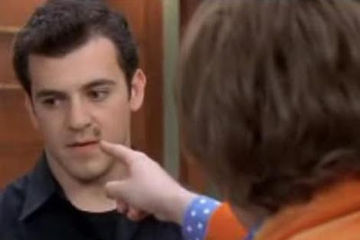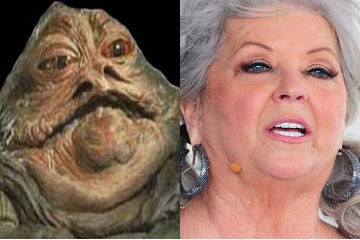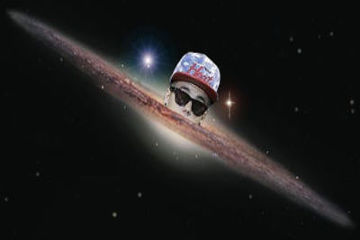What I’ve Learned:
“Sometimes, even a huge number can leave you wanting MOOOOOOLE!”
Contrary to popular belief, Avogadro’s number is neither the first item in a guacamole recipe, nor the less-successful Italian sequel to Schindler’s List. In fact, modern science says it isn’t officially a thing at all any more, like Pluto’s planethood or Steven Hawking’s dance moves.
Too soon? Sorry.
What is a thing is the Avogadro constant, which is closely related to the measurement known as a ‘mole’. The mole is a very important scientific concept, defined as the amount of a substance in grams equal to the atomic weight of that substance.
For pure elements, figuring a mole is easy. Take carbon, for instance. Carbon’s atomic weight is 12, so a mole of pure carbon — no radioactive isotopes, please — weighs 12 grams. Hydrogen’s a pipsqueak: atomic weight of 1, mole weight of 1. Californium is a beast of atomic weight 98, so a mole of that weighs a hefty 98 grams.
Must be all the Avogadro trees weighing it down.
Since larger atoms weigh more, every element — actually, every substance — has the same number of atoms in a mole. That number is Avogadro’s number, roughly equal to 6.022 x 1023.
(The “Avogadro constant” is basically the same as “Avogadro’s number”, after a bunch of snooty international standards paper-pushers got together and slapped official units on it to make it look pretty in scientific journals. What’s the precise relationship between the “number” and the “constant”? According to Wikipedia:
“Avogadro’s number is a dimensionless quantity and has the numerical value of the Avogadro constant given in base units.”
I know, right? It’s like reading Vogon poetry. Just say they’re the same thing, already, chem-nerds. Jesus.)
Calculating the amount, or molarity, of substances is trickier when they’re more complex — like cyclohexane or gummy bears or Chevrolet Impalas. But it’s still possible. You just figure out the average atomic weight of the molecules involved, plop the stuff on a scale and then calculate the number of moles involved.
(Well. You and I don’t. But other people do. The kind with lab coats and safety goggles and scientific calculators with the fancy buttons worn down.)
The key is Avogadro’s number, which is a pretty amazing thing itself. It’s a universal link between the mysterious world of atoms, which nobody understands, to the everyday world of grams — which only drug dealers and metric Europeans understand.
Also, it’s huge: six hundred and two sextillion, give or take a few quadrillion molecules. That many meters would equal 60 million light years, as far as the Virgo galaxy cluster. If it were gumballs, six hundred sextillion is almost — almost — more than Rachael Ray could fit into her mouth at once. So yeah, it’s a lot.
Yet all those molecules are jammed into 12 grams of carbon, less than half an ounce. It boggles the mind. And the Avogadros.
It even boggles the scientists. Chemists have taken to celebrating “Mole Day” each year, between the hours of 6:02AM and 6:02PM on 10/23. Because they haven’t received quite enough wedgies for sustained dorkiness, apparently.
You’d think they’d at least take it seriously — and not use it as an excuse to make constant “Mooooole!” jokes like a bunch of giddy four-eyed Austin Powers fanboys.
You would be wrong. Score one for Team Avogadro. Yeah, baby.





